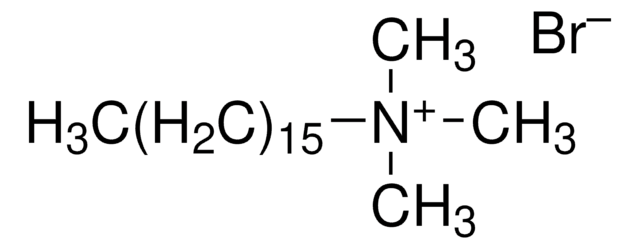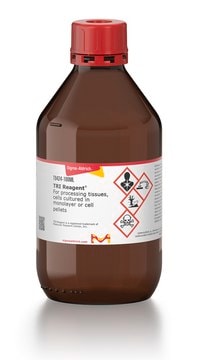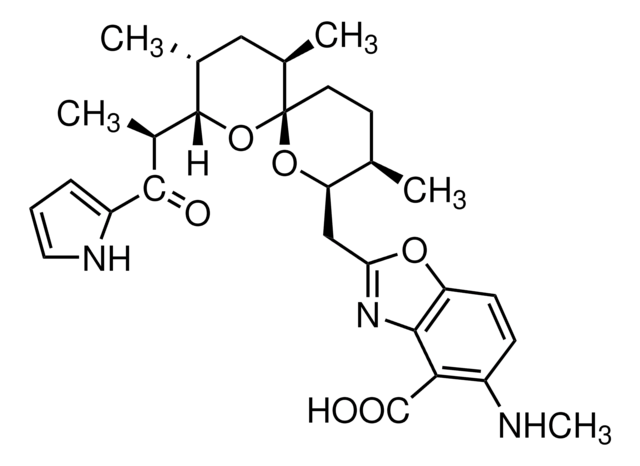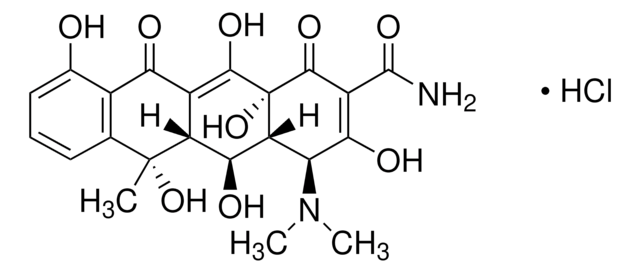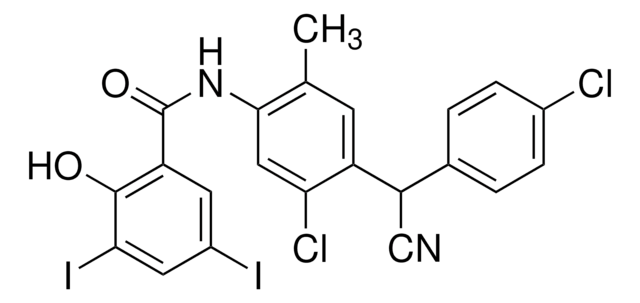R5628
Hae III from Haemophilus aegyptius
Restriction Enzyme
Se connecterpour consulter vos tarifs contractuels et ceux de votre entreprise/organisme
About This Item
Numéro CAS:
Numéro MDL:
Code UNSPSC :
12352204
Produits recommandés
Qualité
for molecular biology
Forme
buffered aqueous glycerol solution
Concentration
10,000 units/mL
Conditions d'expédition
wet ice
Température de stockage
−20°C
Vous recherchez des produits similaires ? Visite Guide de comparaison des produits
Spécificité
Recognition sequence: 5′-GG/CC-3′
Ligation and recutting results: After 2-10-fold Hae III overdigestion of 1 μg λ DNA substrate, results in 100% cutting, >50% of fragments can be ligated, and >95% recut.
Heat inactivation: 80 °C for 20 minutes.
Ligation and recutting results: After 2-10-fold Hae III overdigestion of 1 μg λ DNA substrate, results in 100% cutting, >50% of fragments can be ligated, and >95% recut.
Heat inactivation: 80 °C for 20 minutes.
Application
HaeIII is a restriction enzyme that is used in molecular biology methods to cleave DNA at the recognition site 5′-GG/CC-3′ to generate DNA fragments with blunt termini.
Autres remarques
Supplied with 10x Restriction Enzyme Buffer SM (B3158).
Comment: Inefficient for single-stranded DNA cleavage.
Hae III requires optimal reaction conditions in order to avoid star activity.
Hae III requires optimal reaction conditions in order to avoid star activity.
Forme physique
Solution in 20 mM Tris-HCl, pH 7.7, 0.1 mM EDTA, 400 mM NaCl, 10 mM 2-mercaptoethanol, 50% glycerol (v/v) at 4°C
Produit(s) apparenté(s)
Code de la classe de stockage
10 - Combustible liquids
Classe de danger pour l'eau (WGK)
WGK 2
Point d'éclair (°F)
Not applicable
Point d'éclair (°C)
Not applicable
Certificats d'analyse (COA)
Recherchez un Certificats d'analyse (COA) en saisissant le numéro de lot du produit. Les numéros de lot figurent sur l'étiquette du produit après les mots "Lot" ou "Batch".
Déjà en possession de ce produit ?
Retrouvez la documentation relative aux produits que vous avez récemment achetés dans la Bibliothèque de documents.
Stefano Fazi et al.
Environmental microbiology, 10(10), 2760-2772 (2008-07-23)
We studied the diversity, community composition and activity of the primary microbial colonizers of the water above freshly re-wetted sediments from a temporary river. Dried sediments, collected from Mulargia River (Sardinia, Italy), were covered with sterile freshwater in triplicate microcosms
Duplex regions in "single-stranded" phiX174 DNA are cleaved by a restriction endonuclease from Haemophilus aegyptius.
R W Blakesley et al.
The Journal of biological chemistry, 252(20), 7300-7306 (1977-10-25)
Beatrix Kotlan et al.
Journal of immunology (Baltimore, Md. : 1950), 175(4), 2278-2285 (2005-08-06)
The potential tumor-recognizing capacity of B cells infiltrating human breast carcinoma is an important aspect of breast cancer biology. As an experimental system, we used human medullary breast carcinoma because of its heavy B lymphocytic infiltration paralleled to a relatively
C Kessler et al.
Gene, 92(1-2), 1-248 (1990-08-16)
The properties and sources of all known class-I, class-II and class-III restriction endonucleases (ENases) and DNA modification methyltransferases (MTases) are listed and newly subclassified according to their sequence specificity. In addition, the enzymes are distinguished in a novel manner according
Cong Zhu et al.
Nucleic acids research, 41(4), 2455-2465 (2013-01-11)
Zinc-finger nucleases (ZFNs) have been used for genome engineering in a wide variety of organisms; however, it remains challenging to design effective ZFNs for many genomic sequences using publicly available zinc-finger modules. This limitation is in part because of potential
Notre équipe de scientifiques dispose d'une expérience dans tous les secteurs de la recherche, notamment en sciences de la vie, science des matériaux, synthèse chimique, chromatographie, analyse et dans de nombreux autres domaines..
Contacter notre Service technique